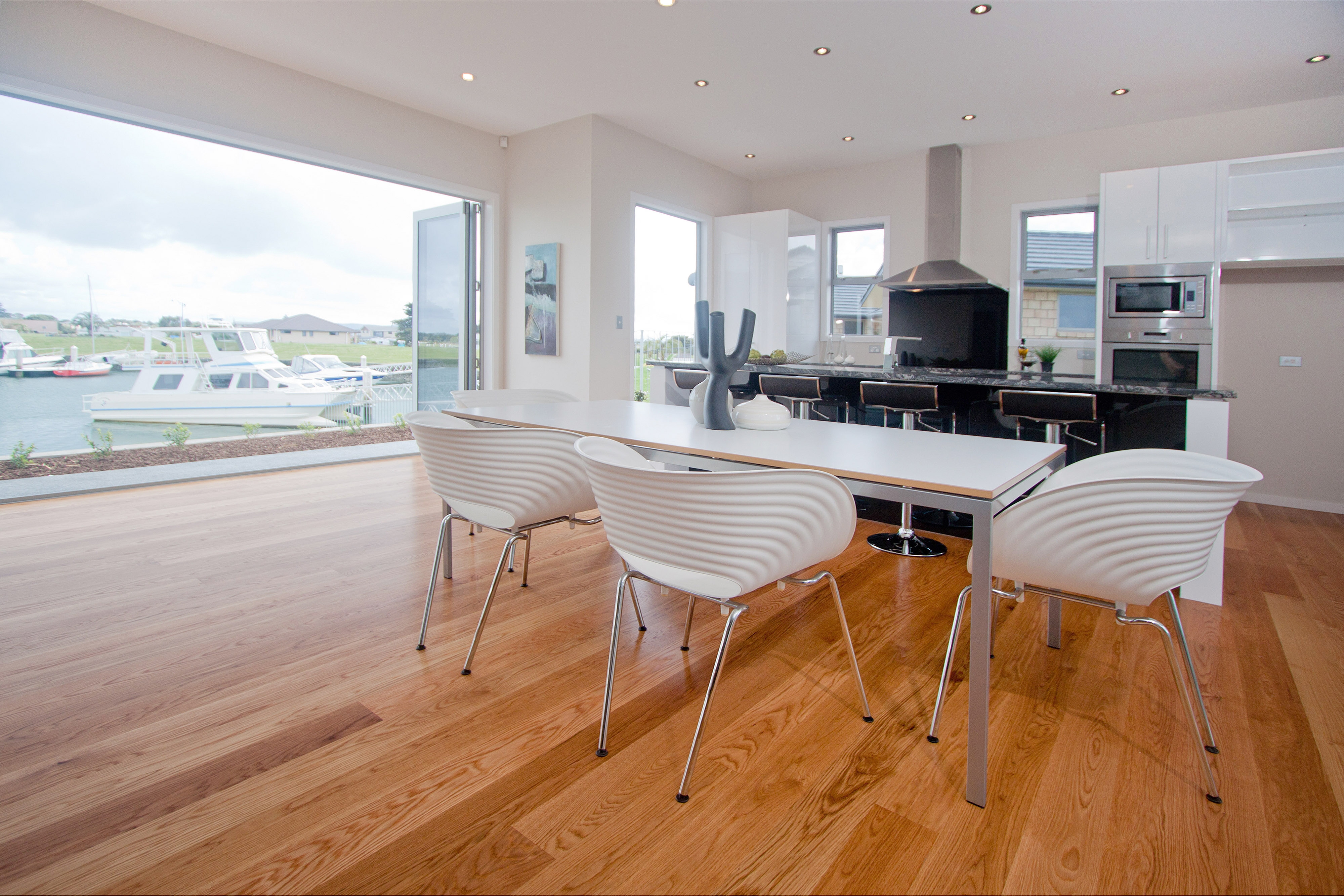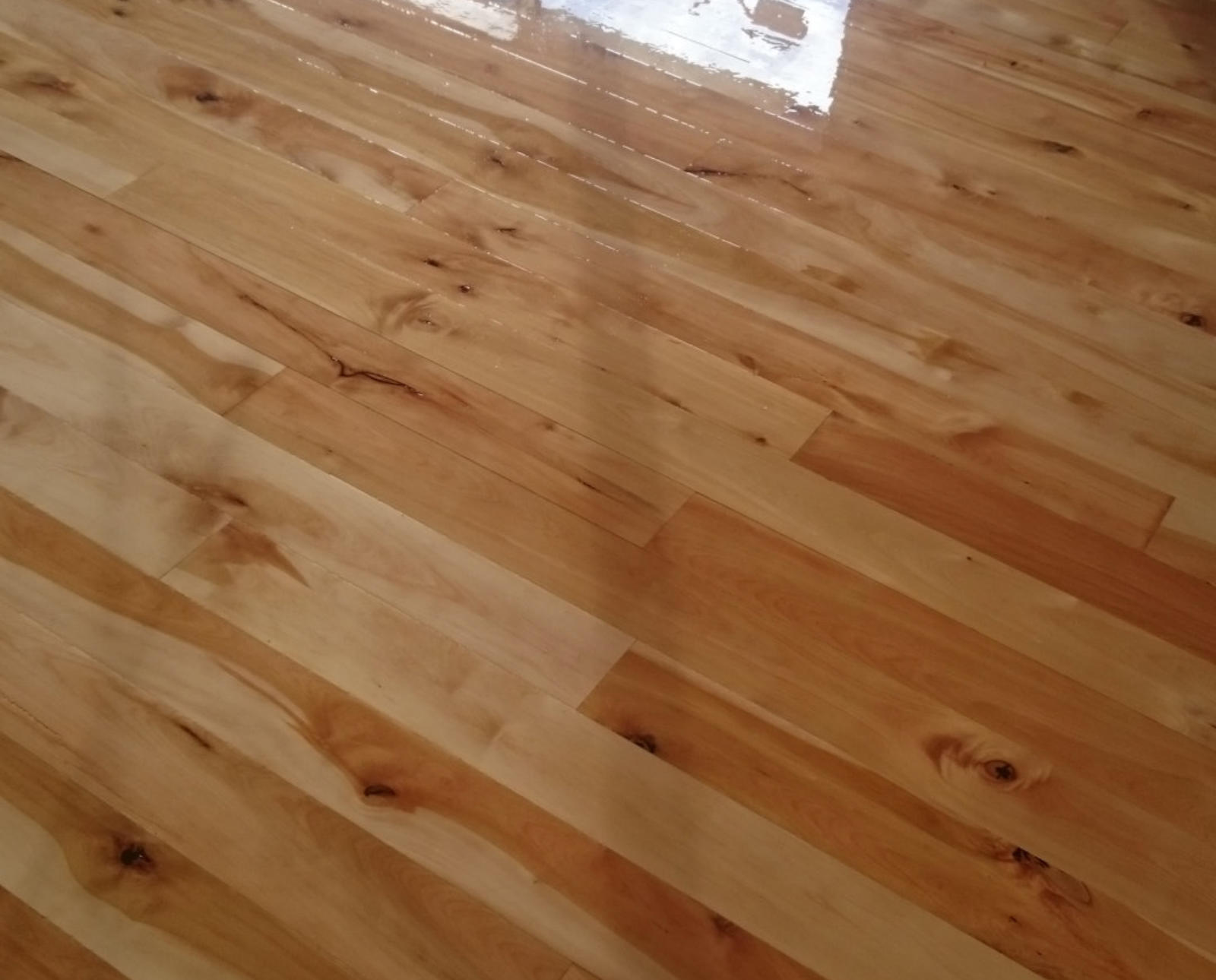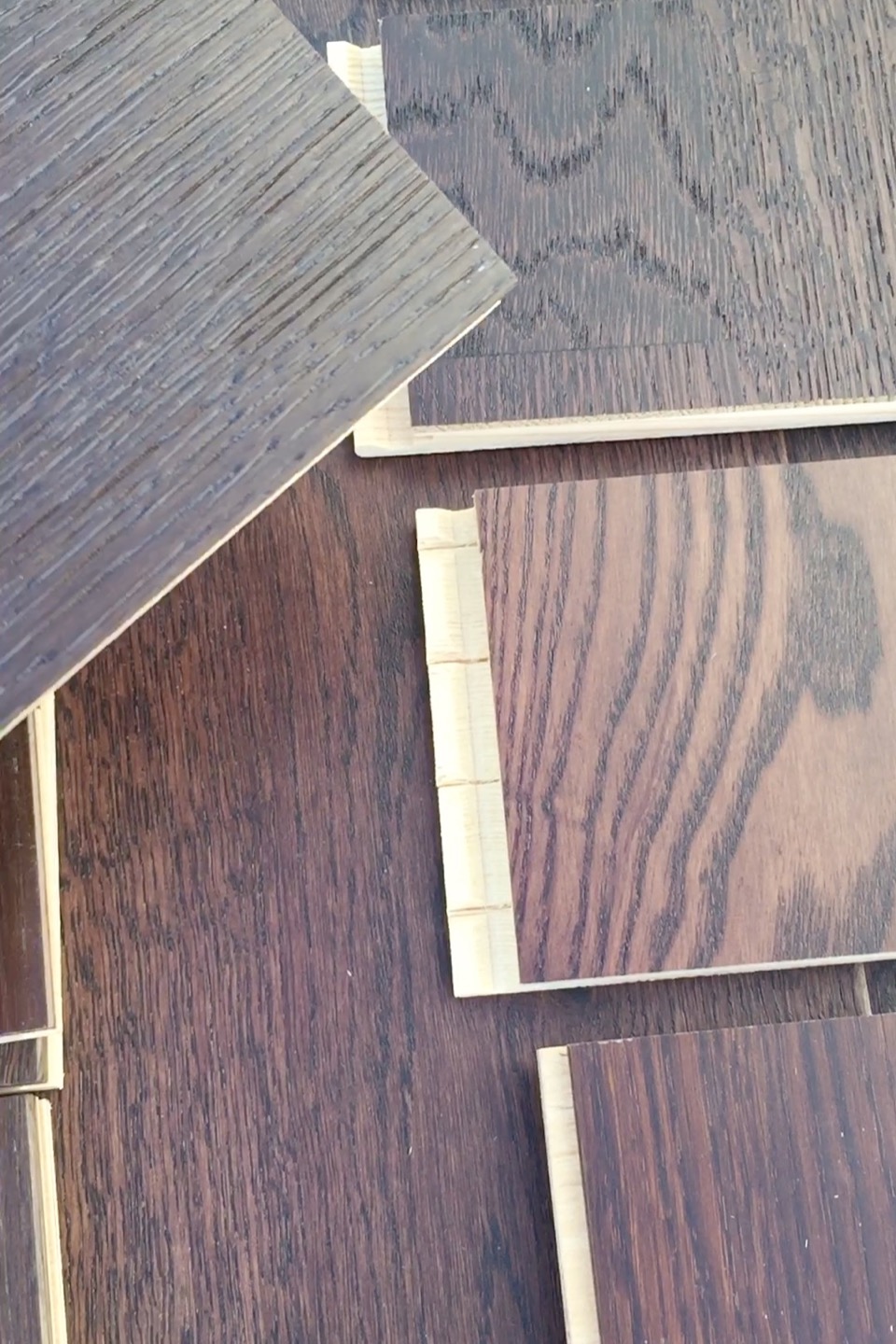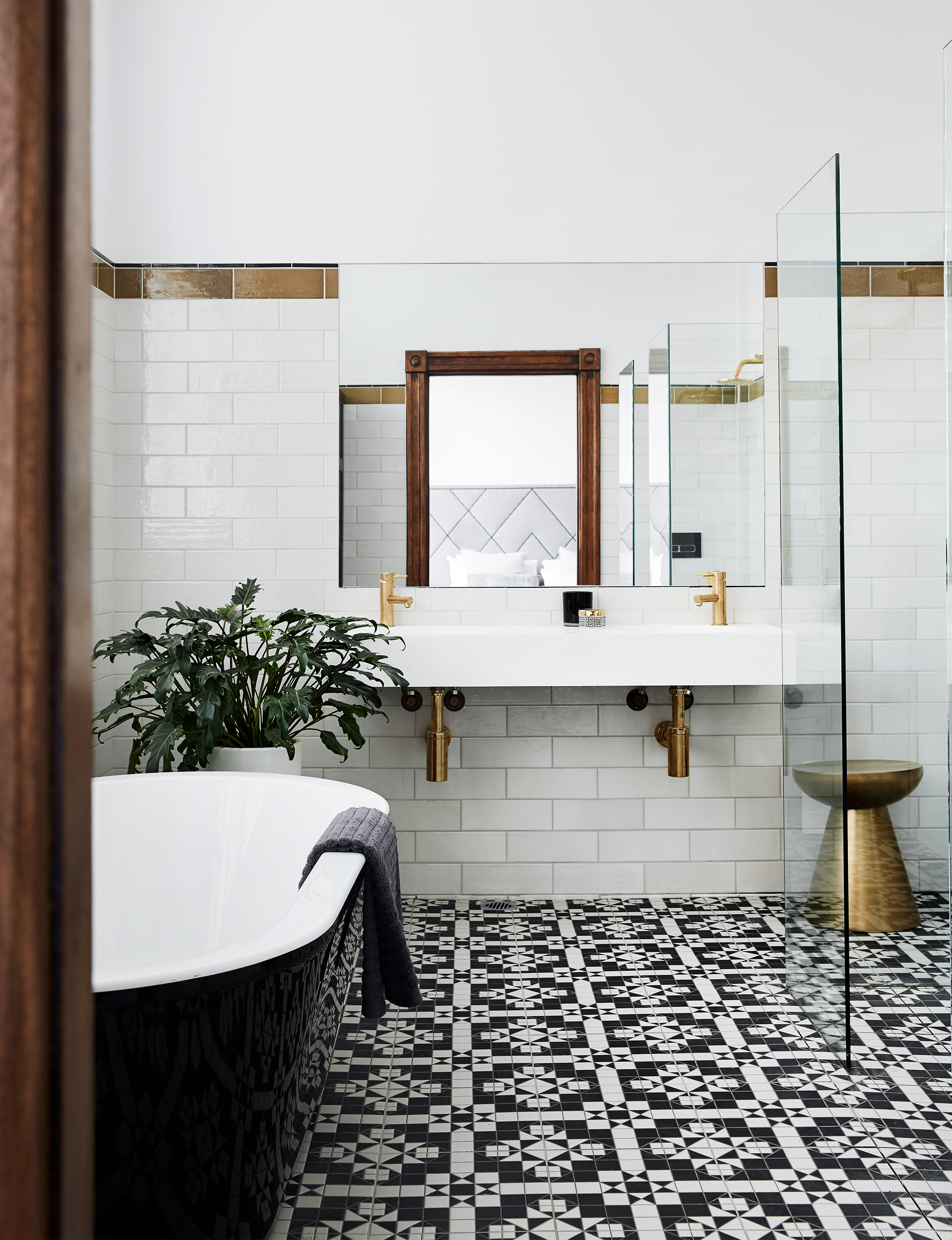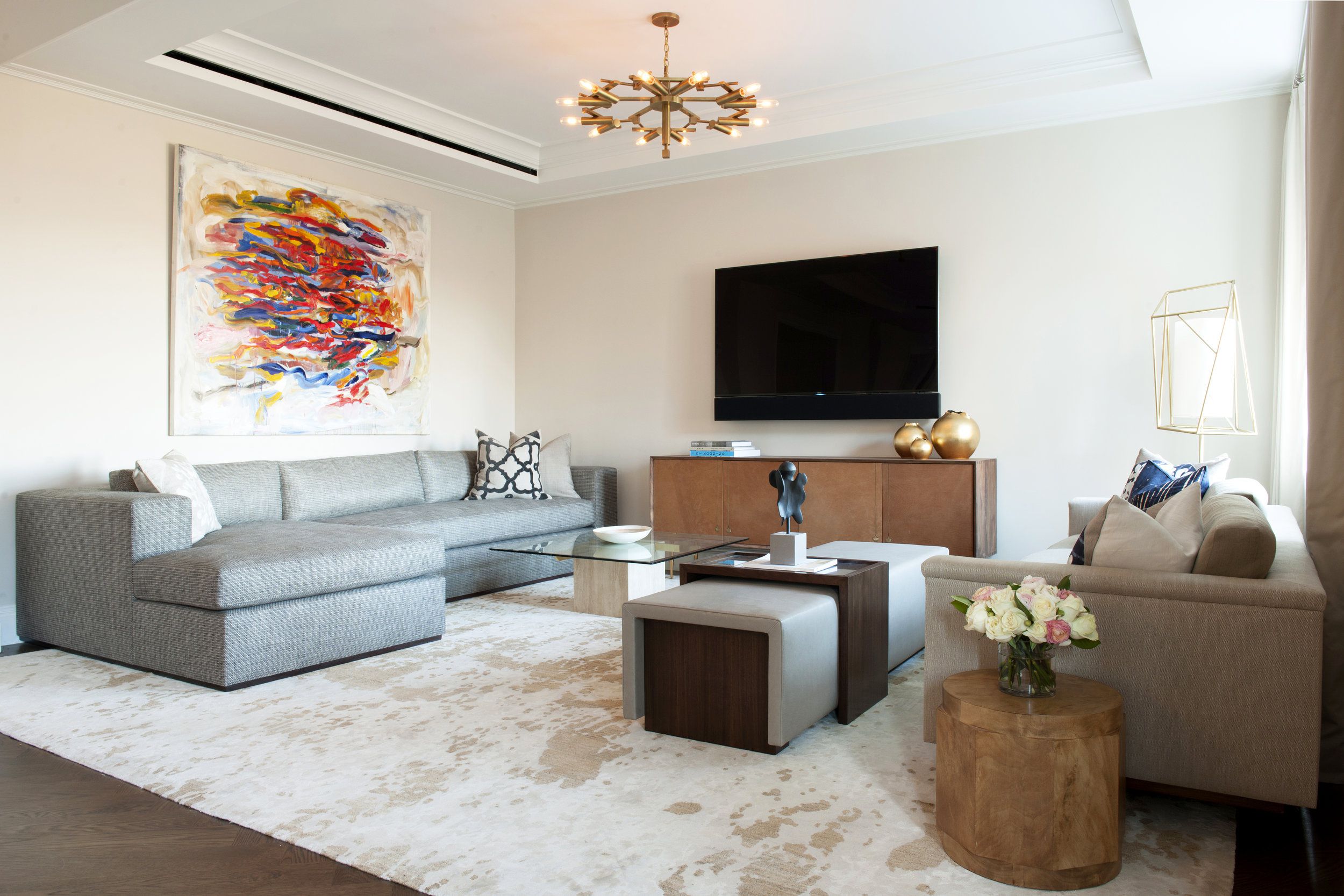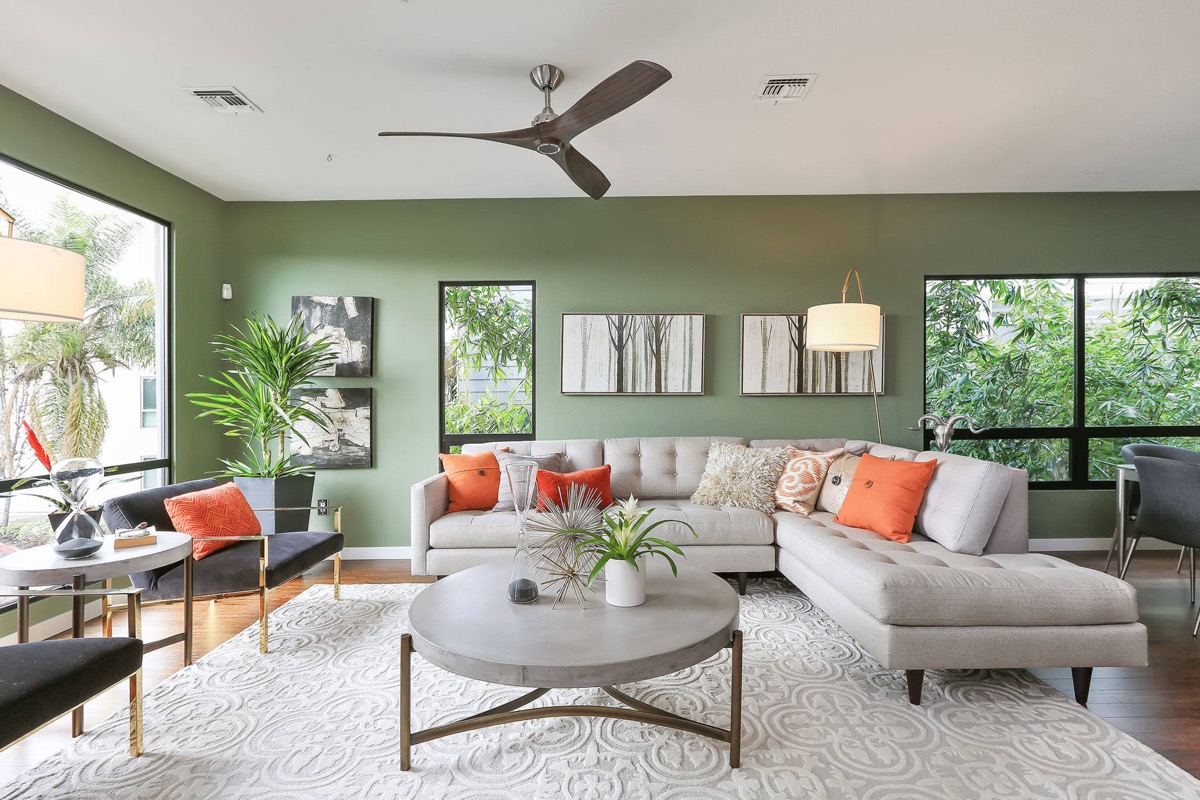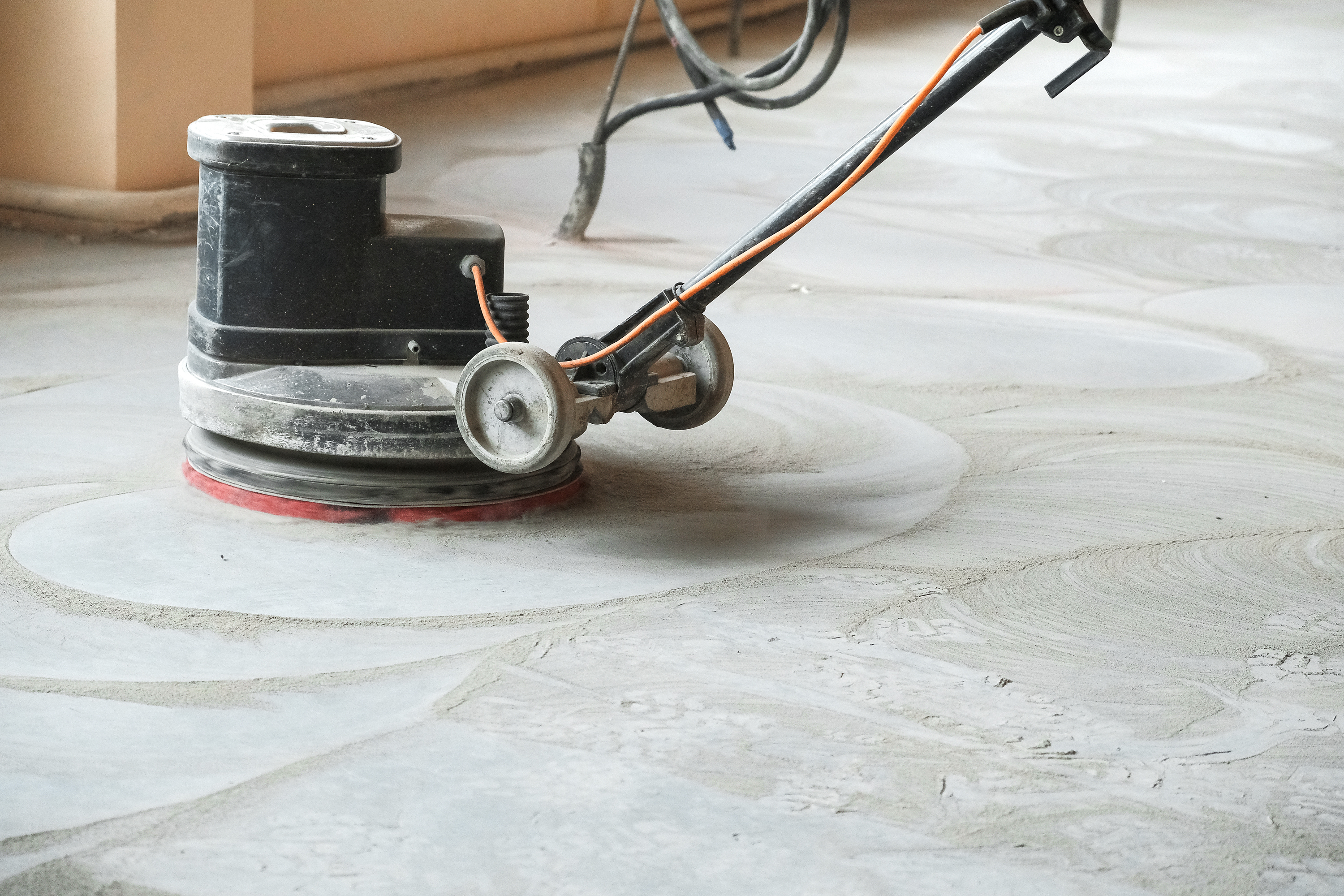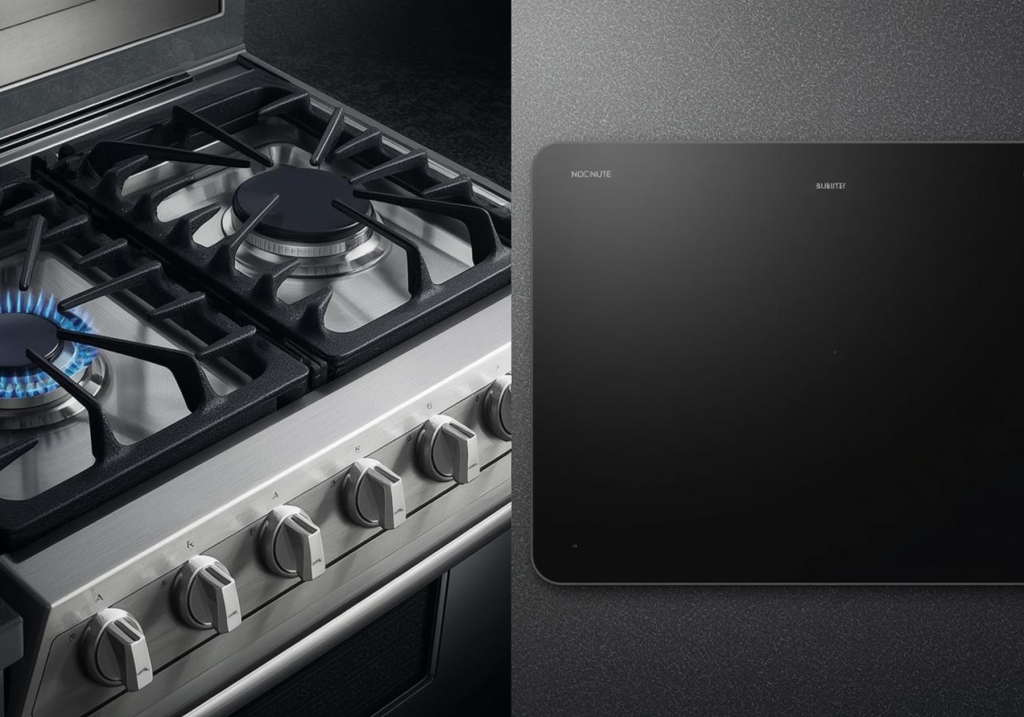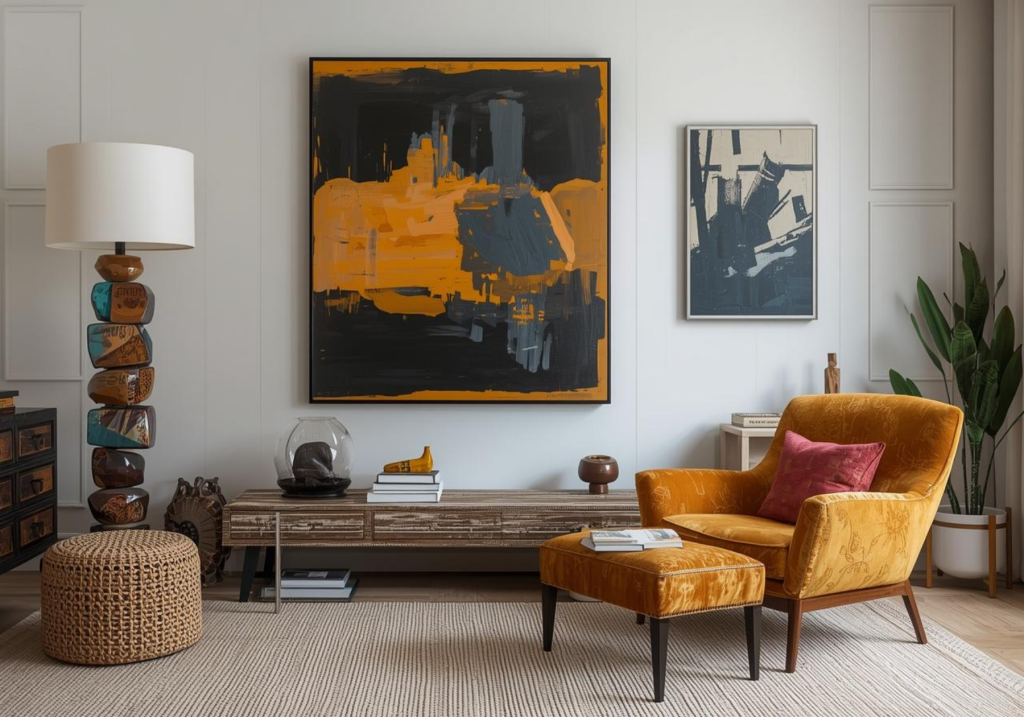If you watch any home makeover tv show you’ll see how dramatic a change in two areas – wall colour and flooring, can make. The simple reason is that these two surfaces are the areas your eye sees the most. In fact, the effect of changing the floor colour and/or texture will almost feel like you’re in a new home! So, let’s look at the four best-loved flooring options: wood, tile, concrete and carpet.
Before you start!
Floors are the big bit of your home. So that means careful consideration of the floor material, colour and texture. Because it’s going to cause temporary mayhem for the family during installation, and it’s often costly, this isn’t something you’ll do every year. So, look at the trends and think ahead. Whatever you put on the floor sets the benchmark for what your home décor will look like for years to come.
Wood is Good!
Wood is close to the heart of every Kiwi homeowner; we love it. Chances are that you grew up in a Villa or Bungalow that had a wooden floor, or you’ve lived in houses with them since. Wood is warmth, the colour is usually in the golden tones, it isn’t as cold on your bare feet as stone or concrete and there are so many subtle patterns and textures to play with. And if you check the international trends you’ll see that wood is back in a big way. Wood floors are best for living room, bedroom, high traffic areas like hallways and (with care) kitchens.
Existing Wood:
If there’s a solid wooden floor lying underneath a 30 year-old bit of carpet, then just rip up the rug and sand and polish for the perfect floor. Kiwi floors are usually Kauri or Matai and they polish up to the most beautiful finish. Be prepared for a golden colour however, as those woods tend towards that colour. You could stain them for a darker result, but make sure it’s what you want as stain is not reversible in future.
Take note – if your floor has already been sanded and polished in the past, you’ll need to check it is still thick enough to be sanded again. Most floors can be sanded twice maximum or they start getting springy, crack or worse. Also, nail heads may need to be punched and filled. So, get someone to give you some advice on that before you begin.
Cost: to sand and polish a bare wood floor is between $50 – $80 per sq metre (approx) depending on the polyurethane used and the complexity of the job.
Polished Flooring options come up well!
New Wood:
If your heart’s set on wood and you need to lay it over your existing floor material, (or your current floor can’t be resurfaced), never fear, there are dozens of wood, or wood veneer options.
Engineered flooring options:
Engineered floors are high-quality pre-made veneer floors – these are usually a 4mm layer of real hardwood over the top of a plank of less expensive timber. The advantage of these planks are the way they fit together, providing improved strength for the floor and a variety of surface textures and colours. Also, they’re available in a number of woods, from NZ natives, through European Oak, Ash or Jarrah. As a further saving, they come pre-polyurethaned. And you can lay an insulating moisture barrier underneath for improved comfort. (NB: the thicker the veneer, the better the product!).
Cost: Just the flooring alone, between $85 per sq metre for bamboo, through to Engineered board at between $150- $195 per square metre (if you want it glued down add another $45 per metre).
Click together Vinyl Planks:
There are many kinds of vinyl floorboards available, ranging from click-together faux-wood floors, or even glued-down flexible wood-effect vinyl. Our recommendation is to think very carefully before you lay these, as some of them only guarantee the surface (under normal wear) will last 5-10 years. Make sure to buy a product that will last.
Click together flooring options
Wood Considerations
Whatever surface you lay you’ll need to consider what that additional thickness does to the rest of the house. Doors will most likely need to be removed and planed to fit, skirting boards may need to be replaced (to allow the flooring boards to fit underneath) and if you’re not re-flooring the entire house, you may end up with raised edges to trip on.
Also, to do this properly you’ll need to remove every stick of furniture and if you’re sanding there will be dust and fumes from the polyurethane. Good planning will cover all these issues, so take your time and consider the wooden flooring options!
Miles of Tiles
Tiles are (next to wood), the most ancient durable flooring solution dating back to the 13th Century. They come in every style, colour and texture from the look of natural stone, to woodgrain effects, to some tiles that look like aged steel or bronze. You can lay them in patterns for visual impact or very large tiles with minimal joins for a seamless floor. Tile floors are best for wet areas such as the kitchen, bathroom and laundry, but can be used in high traffic areas like hallways and potentially any other room.
Tiles are comparatively easy to lay in an existing home. Usually a sheet of cement board is laid over an existing wood or particle board floor, adding real strength to the home’s floor, before tiles are laid on top. Tiles can be cut to any shape, so with care, can fit almost any quirky or complicated layout.
Major impact with a mixture of sizes and shapes
Tile Considerations
If you’re laying over a timber floor, the floor is usually checked for rot or damage and repaired. Cement board is laid and nailed down, before it is sealed and then the tiles glued down. If tiles are going onto a concrete floor, then you will be able to lay them directly onto the existing floor after ensuring there are no lumps and bumps that need grinding off. Tiles add to floor thickness, so you’ll need to trim doors and door frames to allow for the tiles, and potentially replace skirtings for a neat’n’tidy finish.
Tiles aren’t naturally warm – not as cold as stone, but not as warm as wood either. So, if you’re planning to tile your bathroom or kitchen floor, we recommend considering underfloor heating. This is done with an electrical heating pad placed under the tiles – usually with an insulating board under the heating pad to stop moisture.
If you’re tiling dry areas like a hall floor, and if you think you have the skills, with careful planning you can do-it-yourself. But with a wet area such as a bathroom, you’ll need to call in the experts or if you have water damage at a later date, you may find that your insurance won’t pay. Don’t forget to check your Council for permit requirements also.
Cost: Tiles can vary between $70 a square metre to $300 or more including tiles, grout and labour. Underfloor heating will add around $1,000 for the average 15 metre bathroom, plus electrical installation charges.
Crazy for Carpet!
Most Kiwis have great affection for carpet, remembering the shag-piles and Berbers of their childhood homes. Now, after a period of minimalist Scandi-style homes with polished floors and occasional rugs, the carpet is coming back, thicker, bolder and more textured than it’s been for years.
As flooring options go, Carpet is hard to beat for a home. The underlay makes it soft on the feet, the fibre makes it warm, it can be laid over any existing floor structure and it comes in every colour, texture and price category you can imagine. Carpets are best for the entire home, except for wet areas (usually) and high traffic areas.
Carpet Considerations
If you’re laying over a timber floor, it is still important to check the floor for rot or damage and repair these areas. A key factor in carpeting a floor is in the underlay. There are different grades and this has an impact on how well your carpet wears. Make sure you check the underlay quality before approving a quote. If a quote seems too low, it may be the underlay that is the difference.
There are too many types of carpet to list, but suffice to say there are six main fibres;
Wool: Wool and wool-rich pile carpets have a luxurious feel, are naturally stain resistant and 100% natural, renewable and biodegradable.
Wool Blend: A mix of wool and synthetic fibre offers the durability of synthetic fibres and the natural, luxurious feel of wool. An affordable alternative for family homes and for medium to high traffic areas.
Triexta: a premium synthetic fibre containing DuPont™ Sorona®, a polymer 37% renewably sourced from corn sugar. Supremely soft, Triexta carpet provides optimal levels in stain, soil, wear and colourfast performance.
Polyester: manufactured using synthetic fibres which offer colourfastness and a rich soft feel, Polyester provides great value, but a shorter lifespan.
Nylon: Solution-dyed nylon fibres provide long-term resilience and durability with excellent colourfast properties and are resistant to most stains (provided they have been appropriately treated).
Polypropylene: usually entry level carpets, Polypropylene fibres are strong, colourfast and resist most stains.
 We’ll be diving deeper into carpet flooring options in a blog post coming soon
We’ll be diving deeper into carpet flooring options in a blog post coming soon
Three Ways to Play
Edge to Edge carpeting is still the easiest and best way to carpet a room. Carpet edging is nailed down, underlay is laid and then the carpet is stretched to fit. It’s tidy, no wrinkles or edges to tip on, and you get a warm oasis of colour and texture across the entire space.
Bound Carpet Rugs are another way to introduce the luxury of a carpet, but still show off your new polished timber or concrete floor! Simply select your carpet style and ask to get it edge bound, overlocked (Serged) or fringed. Then you can roll it out where you want it to go. You can get felt backing also to protect your floor and stop slipping.
Floor Runners are the perfect hallway feature, softening the sound of footsteps and protecting the floor from undue wear. Just select your carpet and get it edge bound.
Before you get a quote! It is important when getting your carpet/underlay quoted to remember that carpets are usually costed in linear metres, not square metres! Why the difference? Because ‘broadloom’ carpets are usually supplied on rolls 3.66m wide, so you pay per metre off the roll. But installation is often quoted in square metres. Make sure you check the quotations!
Cost: Carpet ranges and costs vary massively, between $35-$115 per square metre, fully installed.
Creating with Concrete!
After the busyness of wood, the linear quality of tiles, or the texture of carpet, the shiny expanse of a polished concrete floor can look spectacular. And there are so many visual effects; shiny floors with speckles of cut aggregate, or salt and pepper grey tones, or industrial style floors with filled cracks and mixed aggregates.
If you’re doing a ground-level new build or extension, concrete is definitely an option to consider. Or, if you’re doing a factory renovation or converting the garage to living space, you may find that you can opt for a polished concrete floor also. Likewise, if you tear up the carpet or vinyl in your home – built later than the ‘80s, and there’s a concrete floor beneath, you may be able to go straight to grinding and polishing. If you do, make sure it’s a big area, as you’ll find it just isn’t economical for a smaller space. Concrete floors are great for wet areas like kitchens and bathrooms. They also make a statement for living rooms, and high traffic areas.
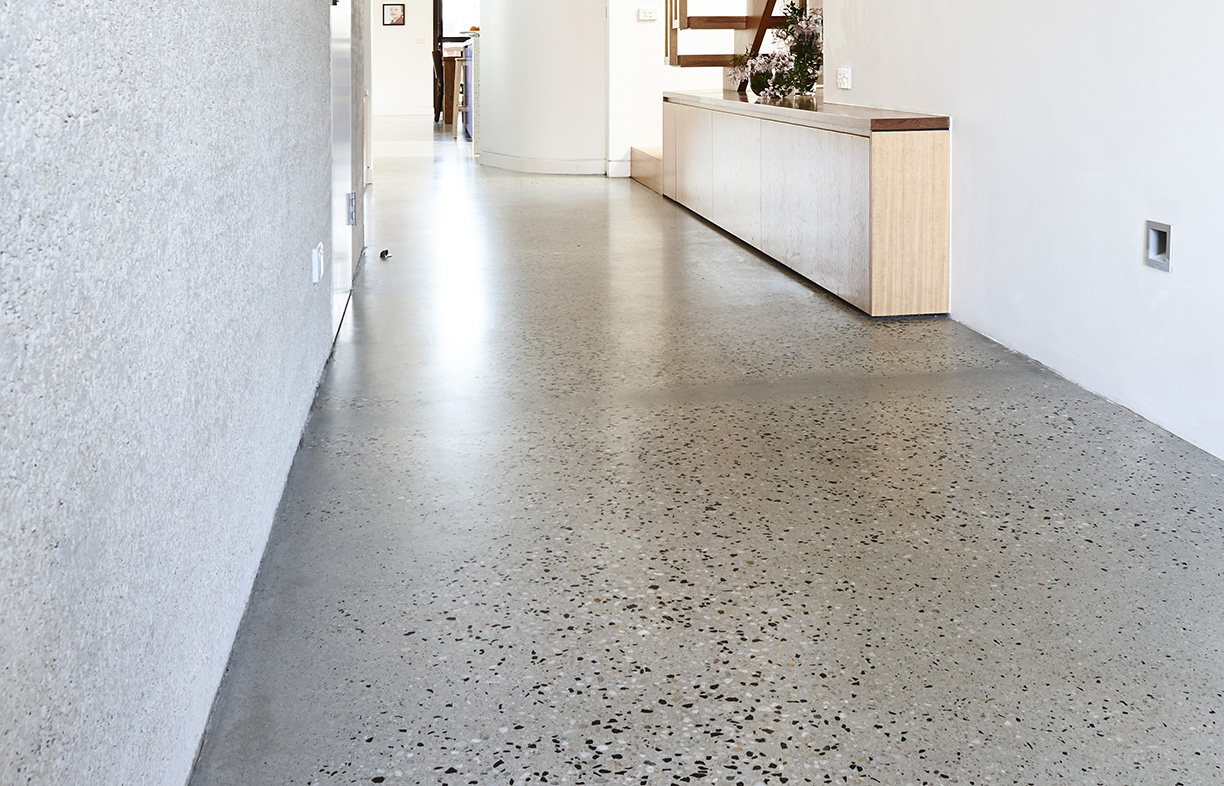 Varied aggregate in polished concrete floor
Varied aggregate in polished concrete floor
Concrete Considerations:
Concrete looks brilliant when it’s polished to a high sheen, but not all concretes are born equal. It’s hard to know exactly what you’ll get until that grey top layer is removed and you get down into the concrete mix below. For some, this is part of the fun! But others may be disappointed with the result, so consider grinding an area to see what’s below.
Remember that concrete is cold at the best of times. Modern concrete floors have insulation below to stop them getting truly icy. Many floors have inbuilt heating pads to take away the chill, especially in kitchens and bathrooms.
There are two main methods for preparing your concrete floor. Grind and Seal involves grinding back the top layer of concrete and then sealing it with a matte, semi or high-gloss sealant. Mechanically Polished Concrete floors are ground back and then polished to the required level of shine. The process starts with a really course grinding pad, then finer and finer pads until the floor becomes polished. These floors take longer and are more expensive initially, but look good for longer.
Concrete flooring options are dusty work – but the finish is timeless
Note that the grinding process is usually very, very dusty. In places where water can be used in the grinding process, a cement slurry is created that needs to be managed. But the resulting floor is incredibly rewarding when finished and will last a lifetime.
Cost: Grind and seal costs between $50 to $130 per square metre. The larger the area, usually the cheaper per metre. Prices vary by district, difficulty and finish.
No doubt flooring is a big consideration for your home. We suggest you speak to the experts at your local flooring stores, ask about the trends, get recommendations. Choose options that will fit in with your style and the way you want to use your spaces.
Or better still, check out the wide range of flooring options and speak to a range of experts at the Auckland Home Show, Wednesday 4 – Sunday 8 September at ASB Showgrounds, Greenlane.
Grab your tickets online HERE and save on entry!
Love your home? Join the club! Subscribe HERE for more renovating and building trends, and special Home Show ticket offers.

